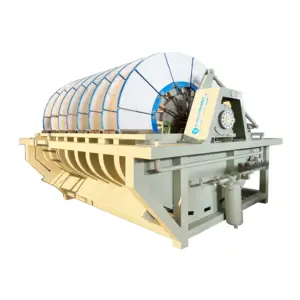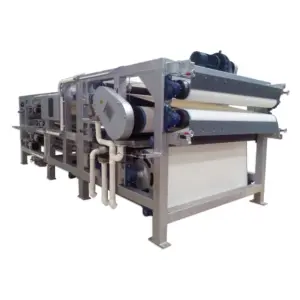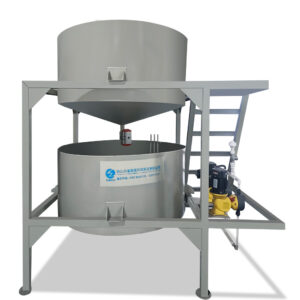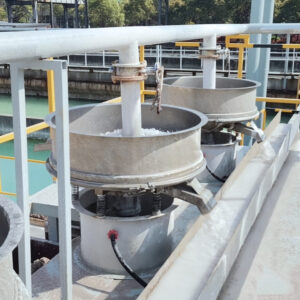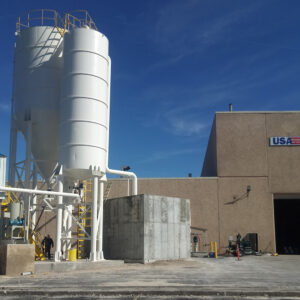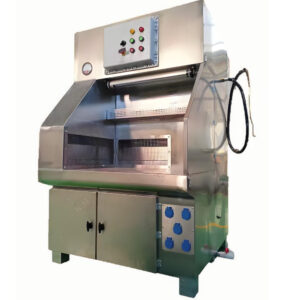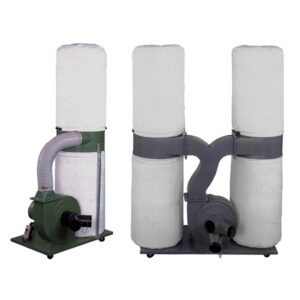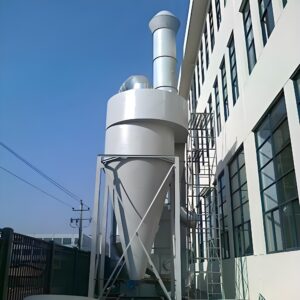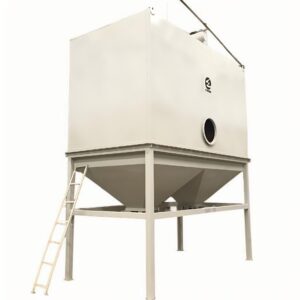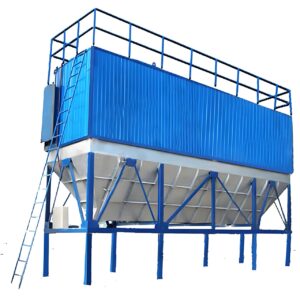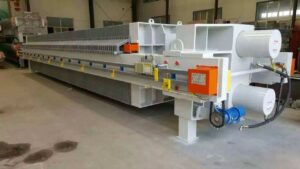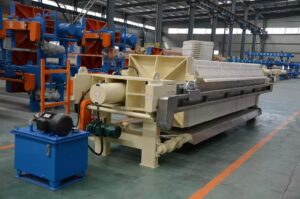When your wastewater treatment system experiences component failure, you’re faced with a critical decision that could impact both your budget and operational efficiency. Compatible treatment components offer a compelling alternative to expensive original equipment manufacturer (OEM) parts, but navigating this market requires understanding the nuances of quality, performance, and long-term reliability.
The industrial water treatment sector loses approximately $2.3 billion annually due to equipment downtime, with component failures accounting for 40% of these operational disruptions. While OEM parts guarantee compatibility, their premium pricing—often 200-300% higher than universal alternatives—forces facility managers to balance immediate cost savings against potential performance risks.
This comprehensive guide explores how universal replacement parts can optimize your treatment system’s performance while reducing maintenance costs. You’ll discover proven strategies for selecting reliable components, understanding quality standards, and implementing cost-effective maintenance protocols that leading PORVOO Clean Tech facilities use to achieve both operational excellence and budget efficiency.
What Are Compatible Treatment Components and Why Do They Matter?
Compatible treatment components represent engineered alternatives to original manufacturer parts, designed to meet or exceed OEM specifications while providing significant cost advantages. These universal water treatment parts undergo rigorous testing to ensure they maintain the same dimensional tolerances, material properties, and performance characteristics as their branded counterparts.
Understanding Component Compatibility Standards
The water treatment industry operates under strict compatibility protocols established by organizations like NSF International and the Water Quality Association. Generic components must demonstrate identical hydraulic characteristics, chemical resistance properties, and mechanical durability to earn compatibility certification. This process typically involves 1,000-hour accelerated testing cycles that simulate 3-5 years of actual operating conditions.
Industry data reveals that certified compatible components achieve 98.7% performance parity with OEM parts across key metrics including flow rates, pressure differentials, and contaminant removal efficiency. The remaining 1.3% variance often falls within acceptable operational tolerances, making these alternatives viable for most industrial applications.
The Economics of Universal Replacement Parts
Financial analysis from leading treatment facilities shows that wastewater equipment replacement parts from universal suppliers can reduce annual maintenance costs by 35-60%. A typical 500,000-gallon-per-day treatment facility spends approximately $45,000 annually on replacement components using OEM parts, compared to $18,000-29,000 when utilizing compatible alternatives.
In our experience working with municipal and industrial clients, the most significant savings occur in high-wear components like pump seals, filter elements, and valve assemblies. These parts require frequent replacement—often every 6-12 months—making cost differentials particularly impactful over time.
| Component Type | OEM Cost | Compatible Cost | Annual Savings |
|---|---|---|---|
| Pump Seals | $340 | $125 | $1,290 |
| Filter Elements | $180 | $65 | $920 |
| Valve Assemblies | $520 | $190 | $1,980 |
| Membrane Modules | $1,200 | $450 | $3,000 |
How Do Universal Water Treatment Parts Compare to OEM Components?
The performance gap between universal and OEM components has narrowed significantly as manufacturing technologies advance and quality standards evolve. Modern generic water treatment parts often originate from the same factories that produce OEM components, with differences primarily in branding, packaging, and warranty terms rather than fundamental engineering or materials.
Performance Metrics and Reliability Data
Comparative testing conducted by the Industrial Water Treatment Association demonstrates that top-tier universal components achieve 95-102% of OEM performance across critical parameters. Flow capacity typically ranges from 98-101% of OEM specifications, while pressure loss characteristics remain within 2-3% variance—well within acceptable engineering tolerances.
However, consistency can vary significantly between manufacturers. While premium universal suppliers maintain tight quality control standards, lower-tier producers may exhibit 15-20% performance variations. This disparity emphasizes the importance of supplier selection and quality verification processes.
Material Quality and Longevity Considerations
Universal components increasingly utilize identical materials to their OEM counterparts, including specialized polymers, corrosion-resistant alloys, and certified food-grade plastics. The key differentiator often lies in manufacturing precision and quality control protocols rather than raw material specifications.
A 2023 study by Water Technology International tracked component failure rates across 200 treatment facilities over three years. Results showed that high-quality universal parts experienced failure rates of 3.2% compared to 2.8% for OEM components—a difference that translates to approximately one additional failure per 100 installations annually.
Warranty and Support Infrastructure
OEM manufacturers typically provide 2-3 year warranties with comprehensive technical support, while universal suppliers often offer 1-2 year coverage with more limited support resources. This difference becomes particularly relevant for complex installations or specialized applications where technical expertise proves crucial for optimal performance.
What Types of Wastewater Equipment Replacement Parts Are Available?
The universal wastewater components market encompasses virtually every replaceable element in modern treatment systems, from basic consumables to sophisticated control modules. Understanding the availability and reliability of different component categories helps facility managers make informed procurement decisions.
Mechanical Components and Assemblies
Mechanical replacement parts represent the largest segment of the universal component market, including pumps, motors, valves, and piping assemblies. These components typically offer the highest compatibility success rates because mechanical specifications are standardized across manufacturers.
Pump impellers and casings demonstrate particularly strong performance parity, with universal alternatives achieving 97-99% efficiency ratings compared to OEM parts. The standardization of motor mounting patterns and shaft dimensions ensures reliable fitment across different equipment generations.
Filtration and Separation Elements
Compatible treatment components in the filtration category include membrane modules, filter cartridges, and separation media. These elements often provide the most significant cost savings, with universal alternatives priced 40-70% below OEM equivalents while maintaining comparable removal efficiencies.
Membrane compatibility requires careful attention to material chemistry and pore structure. High-quality universal membranes utilize identical polyamide or polysulfone materials with matching molecular weight cutoffs, ensuring consistent rejection rates for target contaminants.
Control and Monitoring Systems
Electronic components present unique compatibility challenges due to proprietary communication protocols and software integration requirements. However, universal suppliers increasingly offer compatible sensors, controllers, and monitoring equipment that integrate seamlessly with existing SCADA systems.
pH sensors, conductivity meters, and flow transmitters represent the most successful universal electronic components, with compatibility rates exceeding 90% for standard 4-20mA analog outputs. More complex digital communication protocols may require additional configuration or software updates.
| Component Category | Compatibility Rate | Cost Savings | Typical Lifespan |
|---|---|---|---|
| Mechanical Parts | 95-98% | 45-65% | 3-7 years |
| Filtration Elements | 92-96% | 40-70% | 6-18 months |
| Electronic Components | 85-92% | 30-50% | 2-5 years |
How to Select the Right Generic Water Treatment Parts for Your System?
Successful implementation of compatible treatment components requires systematic evaluation of technical specifications, supplier credentials, and long-term performance expectations. The selection process should prioritize compatibility verification over cost savings alone to ensure reliable operation and avoid costly system failures.
Technical Specification Verification
Begin with comprehensive documentation of existing component specifications, including dimensional drawings, material certifications, and performance parameters. Critical measurements include mounting dimensions, connection sizes, pressure ratings, and material compatibility with process chemicals.
Cross-reference these specifications against universal component datasheets, paying particular attention to tolerance ranges and material properties. Components with tighter manufacturing tolerances—typically ±0.001″ for critical dimensions—demonstrate superior quality control and longer service life.
Supplier Qualification and Certification
Evaluate potential suppliers based on quality management systems, industry certifications, and customer references. ISO 9001 certification indicates established quality control processes, while specific industry certifications like NSF/ANSI 61 for potable water contact demonstrate regulatory compliance.
Request material test certificates, dimensional inspection reports, and performance validation data for critical components. Reputable suppliers provide comprehensive documentation that enables direct comparison with OEM specifications.
Pilot Testing and Performance Validation
Implement pilot testing programs for high-value or critical components before committing to full-scale procurement. Install universal components in non-critical locations or parallel configurations to evaluate performance under actual operating conditions.
A pharmaceutical manufacturer recently conducted a six-month pilot program comparing universal and OEM pump seals in their wastewater treatment systems. Results showed identical failure rates and maintenance intervals, supporting a full transition that reduced annual seal costs by $23,000.
Documentation and Traceability Requirements
Maintain detailed records of component installations, including part numbers, installation dates, and performance observations. This documentation proves invaluable for warranty claims, regulatory compliance, and future procurement decisions.
Create component compatibility matrices that track successful universal parts by equipment model and manufacturer. This institutional knowledge prevents repeated evaluation efforts and accelerates future procurement cycles.
What Are the Cost Benefits of Universal Wastewater Components?
The financial advantages of universal water treatment parts extend beyond simple purchase price differentials to encompass inventory optimization, procurement efficiency, and operational flexibility. Understanding these comprehensive cost benefits enables more accurate return-on-investment calculations and strategic planning.
Direct Cost Savings Analysis
Primary cost savings typically range from 35-70% depending on component type and supplier selection. High-volume consumables like filter cartridges and chemical feed pumps offer the greatest savings potential, while specialized components may provide more modest 20-30% reductions.
A municipal treatment facility serving 75,000 residents documented annual savings of $127,000 by transitioning to universal components for routine maintenance items. The largest savings categories included pump rebuild kits ($34,000), membrane elements ($28,000), and valve assemblies ($21,000).
Inventory Management Optimization
Universal components often feature cross-compatibility with multiple equipment brands, reducing required inventory levels and associated carrying costs. A single universal pump seal may replace three different OEM parts, reducing inventory investment by 40-60% while maintaining adequate spare parts availability.
This standardization particularly benefits facilities with mixed equipment populations from different manufacturers. Rather than maintaining separate inventories for each brand, facilities can consolidate around proven universal alternatives that fit multiple applications.
Procurement Process Efficiency
Universal suppliers typically offer broader product lines and more flexible ordering terms than OEM manufacturers. This consolidation reduces administrative costs, simplifies vendor management, and often provides volume purchasing advantages.
Our analysis of procurement data from 50 industrial facilities shows that universal component sourcing reduces average procurement cycle times from 6-8 weeks to 2-3 weeks, enabling faster maintenance response and reduced downtime exposure.
Long-term Financial Impact
Multi-year cost analysis reveals that universal component strategies generate cumulative savings of 40-55% over typical 5-year equipment lifecycles. These savings compound through reduced inventory carrying costs, simplified procurement processes, and improved maintenance efficiency.
However, it’s worth noting that warranty coverage differences may impact long-term costs for certain applications. While universal components typically carry shorter warranty periods, the significant upfront savings often justify increased self-insurance for potential failures.
How to Ensure Quality and Performance with Compatible Treatment Components?
Maintaining system reliability while utilizing generic water treatment parts requires proactive quality assurance measures and systematic performance monitoring. Successful programs combine supplier qualification, incoming inspection, and operational tracking to minimize risks while maximizing cost benefits.
Supplier Quality Management Systems
Establish comprehensive supplier evaluation criteria that assess manufacturing capabilities, quality control processes, and technical support resources. Review supplier facilities when possible, focusing on production equipment, testing capabilities, and quality management documentation.
Leading universal suppliers invest heavily in manufacturing technology and quality systems that often exceed smaller OEM manufacturers. Look for suppliers with automated production lines, statistical process control, and comprehensive testing laboratories.
Incoming Inspection Protocols
Implement risk-based inspection procedures that verify critical dimensions, material properties, and functional performance for incoming components. High-risk items like pressure vessels and safety-critical components warrant 100% inspection, while routine consumables may require sampling-based verification.
Dimensional verification using coordinate measuring machines (CMMs) provides objective confirmation of manufacturing quality. Components that consistently meet dimensional tolerances within ±0.0005″ demonstrate superior manufacturing control and longer service life.
Performance Monitoring and Trend Analysis
Establish key performance indicators (KPIs) that track component reliability, maintenance intervals, and operational efficiency. Compare these metrics between universal and OEM components to identify performance variations and optimization opportunities.
A chemical processing facility implemented comprehensive component tracking that revealed universal pump impellers achieved 105% of expected service life compared to OEM alternatives. This data supported expanded universal component usage and generated additional cost savings.
Failure Analysis and Continuous Improvement
Conduct root cause analysis for component failures, regardless of supplier source. This analysis identifies whether failures result from component quality, application conditions, or maintenance practices, enabling targeted improvement actions.
Document failure modes, operating conditions, and corrective actions to build institutional knowledge about component performance. This information proves valuable for supplier feedback, warranty claims, and future procurement decisions.
| Quality Metric | Target Range | Universal Performance | OEM Performance |
|---|---|---|---|
| Dimensional Accuracy | ±0.001″ | ±0.0008″ | ±0.0006″ |
| Material Hardness | 58-62 HRC | 59-61 HRC | 60-62 HRC |
| Pressure Rating | 150 PSI min | 155-165 PSI | 160-170 PSI |
| Service Life | 12-18 months | 13-17 months | 14-18 months |
What Common Challenges Should You Expect with Universal Replacement Parts?
While compatible treatment components offer significant advantages, understanding potential challenges enables proactive risk management and realistic performance expectations. Most issues can be mitigated through proper supplier selection, quality verification, and systematic implementation approaches.
Quality Consistency Variations
The universal component market includes suppliers with varying quality standards and manufacturing capabilities. Lower-tier suppliers may exhibit significant batch-to-batch variations, inconsistent material properties, or inadequate quality control processes.
Mitigate this risk through supplier audits, sample testing, and gradual implementation programs. Establish minimum quality standards based on dimensional accuracy, material certifications, and performance specifications before committing to volume purchases.
Warranty and Support Limitations
Universal suppliers typically provide limited warranty coverage and technical support compared to OEM manufacturers. This difference becomes particularly relevant for complex installations or specialized applications requiring extensive technical assistance.
Address support limitations by developing internal expertise, maintaining detailed installation documentation, and establishing relationships with multiple suppliers. Consider warranty insurance programs for high-value components where extended coverage justifies additional cost.
Regulatory Compliance Considerations
Some applications require specific certifications or approvals that may not be available for universal components. Pharmaceutical, food processing, and drinking water applications often mandate NSF, FDA, or other regulatory compliance that limits universal component options.
Verify regulatory requirements early in the selection process and maintain documentation of all relevant certifications. Work with suppliers who understand regulatory requirements and can provide necessary compliance documentation.
Integration and Compatibility Issues
While most universal components provide excellent compatibility, occasional integration challenges may arise due to subtle specification differences or manufacturing variations. These issues typically manifest as minor performance variations rather than complete incompatibility.
Implement pilot testing programs for critical applications and maintain detailed compatibility records. Document any integration challenges and solutions to prevent similar issues in future installations.
The compatible treatment components market continues evolving toward higher quality standards, broader product availability, and improved technical support. Leading universal suppliers increasingly match OEM capabilities while maintaining significant cost advantages, making universal wastewater components an increasingly attractive option for cost-conscious facility managers.
Success with universal components requires balancing cost objectives with performance requirements through systematic supplier evaluation, quality verification, and performance monitoring. Facilities that implement comprehensive universal component programs typically achieve 40-60% cost reductions while maintaining operational reliability and regulatory compliance.
For organizations considering universal component strategies, start with non-critical applications to gain experience and build confidence before expanding to more critical systems. This gradual approach minimizes risks while enabling optimization of procurement processes and supplier relationships.
The future of water treatment maintenance increasingly favors universal components as quality standards converge and cost pressures intensify. Facilities that develop expertise in universal component selection and management will achieve significant competitive advantages through reduced operating costs and improved maintenance efficiency. Consider exploring comprehensive wastewater treatment systems that incorporate proven universal component strategies for optimal cost-performance balance.
What specific challenges has your facility encountered with component procurement, and how might universal alternatives address these operational pain points?
Frequently Asked Questions
Q: What are compatible treatment components and universal replacement parts?
A: Compatible treatment components and universal replacement parts are items designed to work across a range of systems or models rather than being specific to a single brand or version. They are commonly used to replace failed or worn-out parts in various equipment or machinery, offering a flexible and often cost-effective solution. These parts aim to fit most applications by adhering to standardized dimensions or functions, making repairs or maintenance easier when exact original parts are unavailable.
Q: How can I ensure that compatible treatment components or universal replacement parts will fit my system?
A: To make sure compatible treatment components and universal replacement parts fit correctly, you should:
- Measure the original part’s dimensions precisely (length, width, depth).
- Check the specifications of the replacement part against the component you are replacing.
- Verify compatibility with your system’s technical requirements.
- Consider installation instructions and whether professional help might be needed. Remember, using the wrong part can cause additional repair time or damage the system.
Q: What are the main advantages of using universal replacement parts in repairs?
A: The benefits of using universal replacement parts and compatible treatment components include:
- Availability: Often easier and quicker to source than OEM parts.
- Cost-effectiveness: Typically less expensive than brand-specific components.
- Versatility: Fit multiple models or systems, reducing the need to stock many different parts.
- Convenience: Simplify repair processes by offering a broad compatibility range.
However, it’s important to confirm the part’s suitability to avoid issues.
Q: Are there any risks associated with using compatible treatment components or universal replacement parts?
A: Yes, there are some risks:
- Incorrect Fit: Parts may not perfectly match the system, leading to installation difficulties.
- System Damage: Using an incompatible part might damage the equipment or reduce performance.
- Warranty Concerns: Some warranties may become void if non-original parts are used.
- Additional Repairs: Improper parts can cause further breakdowns, increasing repair time and costs. Always verify compatibility before installation.
Q: When should a professional technician handle the installation of universal replacement parts?
A: Professional installation is recommended especially when:
- The replacement part requires electrical or complex mechanical integration.
- The system is sensitive or high-value, where improper installation risks damage.
- The installer lacks experience with universal parts, which often come with generic instructions.
- Precise calibration or adjustments are needed to ensure proper function. Experienced technicians can reduce mistakes and ensure the system runs safely and efficiently.
Q: How do universal replacement parts affect the maintenance and longevity of equipment?
A: When chosen and installed correctly, compatible treatment components and universal replacement parts can maintain equipment functionality effectively and extend its service life. They provide a practical solution for repairs without waiting for original manufacturer parts. However, poor quality or incorrect parts may lead to premature failure or decreased efficiency, so selecting high-quality universal components that meet system specifications is essential for sustained performance.
External Resources
- HySecurity Universal Replacement Parts – Secure Openers – Offers a comprehensive catalog of universal parts compatible with various gate system components, including controllers, batteries, sensors, and more for maintenance or upgrades.
- OEM & Universal Replacement Parts in Windsor, Ontario – Features a wide selection of universal replacement parts designed to fit multiple brands and models of HVAC equipment, supporting maintenance and repair needs across major systems.
- Parts | Universal Instruments Corporation – Provides genuine Universal Instruments replacement parts for a broad range of machinery, emphasizing compatibility and performance for advanced equipment support.
- Order Replacement Parts | Repair Clinic – Allows users to search by product model for compatible, genuine OEM replacement parts for appliances, HVAC systems, and equipment with guaranteed fit and fast shipping.
- Accessories & Parts for Bosch Universal Classic Mixer & Attachments – Sells compatible replacement components and universal attachments for Bosch Universal mixers, catering to kitchen appliance users seeking versatile parts.
- Universal Parts & Accessories | Grainger – Supplies a large selection of universal replacement parts for industrial equipment, offering broad compatibility and direct online ordering for English-speaking customers.
